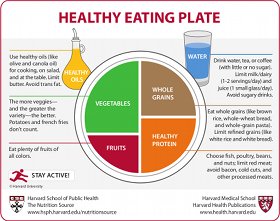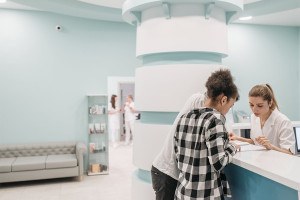The Check-Up: What Harvard Thinks You Should Eat
• Remember earlier this year when the US Department of Agriculture finally ousted ye olde food pyramid and replaced it with the shiny new MyPlate graphic? And remember a few minutes after that announcement, when nutrition experts around the country came to the conclusion that it was close but no cigar? Well. Harvard University professors did them one better: They offered up their own rendition, dubbed the Healthy Eating Plate (hey, no one accused them of being particularly creative). Unlike the USDA’s graphic, the Harvard version includes text. Yes, yes, it muddies up the simplicity and visual design of the whole thing, but the text is, actually, kinda helpful. It’s slugged with tips like, “Drink water, tea, or coffee. Milk and dairy are not must-have foods—limit them to 1-2 servings/day. Go easy on juice. Avoid sugary drinks.” And unlike MyPlate, which left healthy oils off all together, the Healthy Eating Plate actually includes them, explaining that “healthy oils (like olive and canola oil) are good for you. Don’t be afraid to use them for cooking, on salad, and at the table.” So what do you think? Better? Worse? Equally ridiculous? I’d love to hear your thoughts.
• Having a heart attack? There’s an app for that—well, sort of. Makers of a to-be-released smartphone app claim to be able to take heart measurements via electrocardiogram (ECG) right on an iPhone. MIT’s Technology Review has the story about Oklahoma City inventor David Albert, who unveiled the app and accompanying device on YouTube last year. The product would allow people with heart problems to monitor their bodies in a way that’s easier than going to physician’s office all the time. The device, a piece of hardware that fits over the phone and is outfitted with a pair of electrodes, would retail for about $100; Apple’s apparently thinking about carrying it in its stores. “While not as accurate as a hospital-grade 12-lead ECG—the kind that uses many electrodes pasted to the chest, arms, and legs—Albert calls his phone ECG ‘almost as good and disruptively less expensive,’ ” reports TR. A doctor in San Diego has been testing it on patients and so far he likes it, saying it’s cheaper and easier than conducting full-blown ECGs. Plus, he says, he’d eventually like his patients to have the capabilities on their own phones so they can send readings to him day or night. The manufacturer of the device, which currently makes it in China, is seeking FDA approval to begin selling it in the US.



